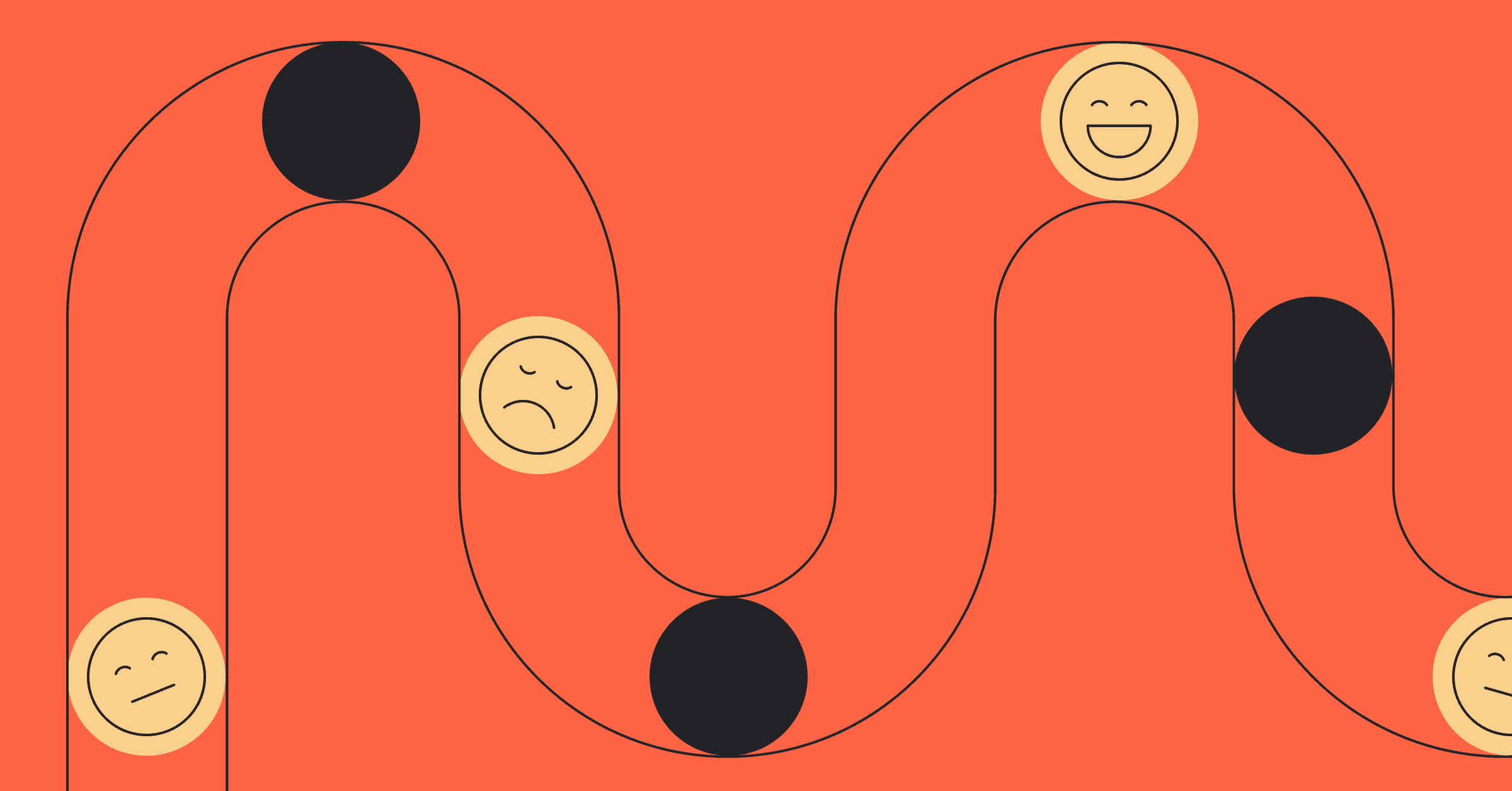The intersection of artificial intelligence and human performance creates both unprecedented opportunities and hidden dangers. Kelly Vaughn, Senior Engineering Manager at Zapier, recently joined the Dev Interrupted podcast as a returning guest to share her journey through burnout and recovery, offering critical insights for engineering leaders navigating today's high-pressure environment.
Create intentional AI adoption strategies that reduce burnout
The excitement surrounding AI tools has created an environment where engineers feel constant pressure to adopt and master new capabilities at breakneck speed. However, Vaughn cautions that you must match this enthusiasm with thoughtful leadership. She emphasizes the importance of leaders clearly defining expectations and providing direction on how teams should integrate AI into their daily work, rather than allowing adoption to happen without coordination.
She recommends establishing regular feedback mechanisms to gauge how team members adjust to new AI-powered workflows. "I would also get a pulse check on how the company or your team is feeling about adopting AI as well. And just do that regularly, like every two weeks or so, especially at the rate AI is moving."
One of the most valuable approaches Vaughn suggests is creating open forums for knowledge sharing that extend beyond departmental boundaries. These forums can help technical teams learn from non-technical teams and vice versa, creating a more unified adoption approach across the organization.
"Make this an open channel of communication because whatever you are doing with AI in engineering, somebody from support or somebody from sales will be able to get an idea from that and apply that to their day-to-day," she notes.
This focus on open communication echoes themes from one of her previous appearances on Dev Interrupted, where she explained that learning how to build influence as an engineering leader often comes down to making your team’s work visible and explaining the ‘why’ behind it to stakeholders across the company.
This cross-pollination of ideas becomes especially important as AI democratizes capabilities across roles. "AI is leveling the playing field in a way, because you don't have to be a developer to get the full extent out of AI," Vaughn observes. Vaughn notes that AI is removing traditional barriers between technical and non-technical roles, enabling people in fields like sales to benefit from these tools just as much as developers can.
AI’s double-edged sword demands thoughtful engineering leadership
While AI greatly benefits engineering teams, it presents unique challenges that leaders must navigate thoughtfully. Vaughn highlights how AI is changing the development landscape in fundamental ways.
"It is making rapid prototyping truly rapid. And I love that. So long as you don't take that prototype and immediately ship it to production," Vaughn cautions. This acceleration can create pressure to skip crucial quality checks, especially for high performers who feel compelled to maintain their reputation for excellence.
However, Vaughn observed that early AI adopters sometimes exhibit declining work quality as they prioritize speed over excellence: "I've noticed some people who were early adopters of using Cursor, for example—their code quality actually decreased because they felt that they had to move so fast that they were becoming wholly reliant on it, and they were shipping less than stellar quality of code."
The push for speed can lead engineering teams to make concerning trade-offs. "If you are trying to build a product that is supposed to continuously support a large number of customers, and you're starting to reduce test coverage in favor of building faster, you're going to start to feel the ripple effects," Vaughn explains. "It is very demoralizing as an engineering team to constantly hear about the complaints of 'this doesn't work' and 'this is broken' when you're getting a lot of top-down pressure to continue to build the next thing."
This pressure particularly affects those caught in the "10x engineer" culture, where expectations for superhuman productivity can lead directly to burnout. Vaughn experienced this firsthand in her previous role, where she simultaneously handled four separate job functions.
Recognizing early signs of burnout in engineering teams
For engineering leaders, recognizing burnout—both in team members and themselves—has become increasingly critical as AI accelerates development cycles. Spotting the signs early is essential to avoid severe impacts on well-being and team performance.
It’s a diagnostic skill she's honed over time, and in a prior visit to the podcast, she drew on her unique background as a trained therapist to explain how a trained therapist diagnoses healthy dev teams by spotting patterns of dysfunction before they lead to widespread burnout.
When watching for burnout in high-performing engineers, key indicators include a slip in work quality, changes in meeting behavior (such as absenteeism or disengagement), and shifts in communication style. A particularly telling sign is when healthy skepticism turns into cynicism. This shift in attitude often signals underlying stress or disillusionment that needs to be addressed.
Burnout symptoms can also manifest personally in physical and emotional ways that build gradually over time. Recognizing these signals early and fostering open conversations about workload and well-being can help leaders build healthier, more sustainable engineering teams. By paying attention to these warning signs and taking proactive steps to address them, organizations can mitigate burnout’s impact and create a more supportive environment for their engineers.
How Vaughn’s personal burnout journey led to Zapier
Vaughn recently experienced burnout firsthand, and after leaving her previous position, she took time to reassess her priorities before joining Zapier. Her experience has led her to redefine her approach to ambition and career advancement. "I'm still ambitious and I'm always going to be ambitious because this is who I am as a person, but how I'm approaching ambition is different," Vaughn explains. "This time I'm going in with a lot more caution, and I'm going in making sure that I'm keeping an appropriate pace to my ambition."
To maintain this new pace, she now works with a coach to identify moments when she feels compelled to take on additional responsibilities and is learning to pause before saying yes. "Every time I feel that urge to push a little bit more or take on this extra project or do this extra thing that's not actually part of my job description, I write it down just to show how frequently it's happening."
When evaluating her next role, Vaughn prioritized:
- A truly remote-first culture that intentionally creates social connection
- Opportunities to continue growing as an engineering leader
- A larger company environment where she could learn to operate at scale while staying focused on her core responsibilities
Her journey offers valuable lessons for engineering leaders navigating AI transformations. Balance the pressure to constantly learn and implement new AI capabilities with sustainable practices that protect individual well-being and long-term product quality. By creating intentional adoption strategies, maintaining regular pulse checks on team wellbeing, and fostering cross-departmental knowledge sharing, leaders can help their organizations harness AI's benefits while avoiding the burnout trap.
As Vaughn reminds us, in today's rapid-fire tech environment, taking time to slow down may be the most crucial step to sustainable speed. If Vaughn’s insights resonate with you, consider subscribing to After Burnout: her newsletter about what comes after hitting the wall. It’s not a list of quick fixes or productivity hacks, but an honest space to rethink ambition, let go of hustle culture, and explore slower, more sustainable ways of working and living. If you’ve burned out, unraveled, or just want something different, After Burnout offers reflections to help you rebuild on your own terms.
Listen to Kelly Vaughn's latest Dev Interrupted episode here:




